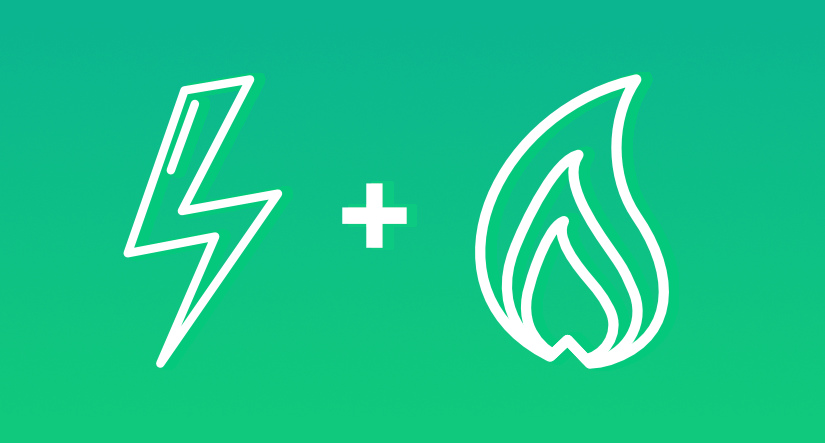What is Dual Fuel? Find the best deals

If you’ve been on the hunt for a cheap energy tariff for your home, you’ll likely have read the words “dual fuel tariff” but not necessarily know what they mean. On this page, you will find everything you need to know about dual fuel tariffs, plus find the best dual fuel deals available to UK customers.
What is dual fuel?
A dual fuel tariff is one which comes with both electricity and gas. Rather than signing up for gas and electricity tariffs separately, which is often expensive and involves more faff, the majority of providers allow customers to kill two birds with one stone and get a quote for both.
Many providers offer discounts for signing up to a dual fuel tariff rather than their single fuel equivalent, so it almost always works out cheaper. This is before you take into consideration the convenience of your bill and customer service contact all being taken care of by the same supplier.
Benefits of a dual fuel tariff
Here are the main benefits of a dual fuel tariff:

- Suppliers will often offer discounts for switching both your gas and electricity with them, meaning that switching to dual fuel will more often than not save you money.
- Having both gas and electricity combined as one bill to pay, rather than two, is a more convenient way of organising your energy expenditure.
- With a dual fuel contract, you only have to contact one supplier when you have issues, meaning just the one online account and one set of login details to remember! This is much more straightforward than having two separate accounts.
Disadvantages of a dual fuel tariff
Here are the disadvantages of a dual fuel tariff:
- If your supplier ups the prices on your tariff, you’ll be expected to pay more for both your gas and electricity as they’re likely to hike both at the same time.
- You will probably be expected to pay exit fees for both fuel types when you switch.
- Depending on the market, it can be cheaper to have two separate providers. You should always compare tariffs before switching to see if you’re getting the best deal.
How do I know if I’m on a dual fuel tariff?
The easiest way to check whether you’re on a dual fuel tariff is to check your energy bills. On it, it will state whether your bill is for dual fuel or just for electricity or gas.
If you get your electricity and gas bill from two separate suppliers, you are definitely not on a dual fuel contract. If your supplier is the same, it’s possible that you are on dual fuel - you can also call your supplier and ask them.
Types of dual fuel tariff
Now that you know what dual fuel is and what the pros and cons are of signing up for it, it’s important to mention that there are a few different types of dual fuel tariff. In this section, we’ll take you through the different ways you can get dual fuel energy.
Standard variable
A standard variable tariff is one in which the rates can fluctuate according to the wholesale price of energy. Customers can be drawn in by a great deal if the market rate of energy is low, but should always be aware that on a variable tariff your provider is entitled to put up your prices as they see fit.
One positive to signing up to a variable tariff is that no exit fees apply if you want to leave your deal to sign up to another one, so if you want you can sign up while the market rate for energy is low and leave when prices start to rise again at no cost!
Fixed dual fuel tariff
A fixed dual fuel tariff is one in which your unit rate and your daily standing charge are set at one price for the length of your contract. Fixed-rate contracts usually have a length of either 12 or 24 months, but some providers offer deals stretching to 36 months.
A fixed tariff does not mean all-you-can-eat energy!Many people are under the impression that a fixed tariff means that you pay the same amount each month regardless of how much energy you use. In fact, it is the unit rate (the price per kilowatt hour (kWh)) and the daily standing charge which is fixed, which means that you will be charged according to your usage.
The benefits of a fixed dual fuel tariff are clear - they allow you to safeguard yourself against price rises for long periods of time and with the commitment you often get a good price, particularly on12-month contracts. It is true, however, that exit fees are common on fixed tariff, so if you want to leave your contract you’ll usually end up paying around £30 per fuel.
Economy 7
Economy 7 tariffs, also sometimes called time of use tariffs, are ones that use special meters to offer two different rates - one for the daytime and one for a seven-hour period during the night time. Users are charged cheaper, off-peak rates for energy consumed during the night, but are often charged rates that are more expensive than normal during the day.
A few providers also offer Economy 10 tariffs, which work in the same way except that users enjoy ten off-peak hours rather than seven, usually for less of a discount than Economy 7 tariffs offer.
These time of use tariffs are great for people who are able to adapt their energy consumption accordingly - which usually means getting a storage heater installed and buying a boat-load of timers. If you’re not willing to adapt in order to save and end up using more than 60% of your energy during the day, you almost certainly won’t save on this type of tariff.
Time of use tariffs’ days are numberedIt’s said that time of use tariffs like Economy 7 and Economy 10 are being phased out by providers due to lack of profitability and popularity. If you own a storage heater or think you could benefit from an off-peak rate, you may not have much time to capitalise on it!
How to switch to a dual fuel tariff
If you’ve done your research and know which provider and which type of dual fuel tariff is best for you, you could head over to the provider’s website and get a quote directly.
How long does it take to switch?
It should take no longer than 21 days for your switch to a new supplier to take effect. This includes a 14-day cooling off period, during which you’re free to change your mind if you’re having doubts about the switch. You won’t be charged an exit fee if you back out of the switch within this two week period.
Do I need anything installed to switch?
Unless you’re switching to a different type of meter - from a prepayment meter to a direct debit, for example -, you won’t need anything installed in order to switch. If you do need to have something installed, it should be covered by your new provider. It’s particularly important to pick one with good reviews if this is the case, as you don’t want any added stress creeping in during the installation process due to poor organisation or customer service!
